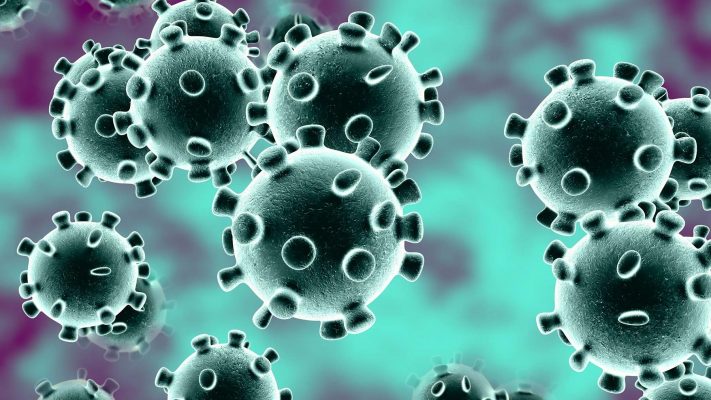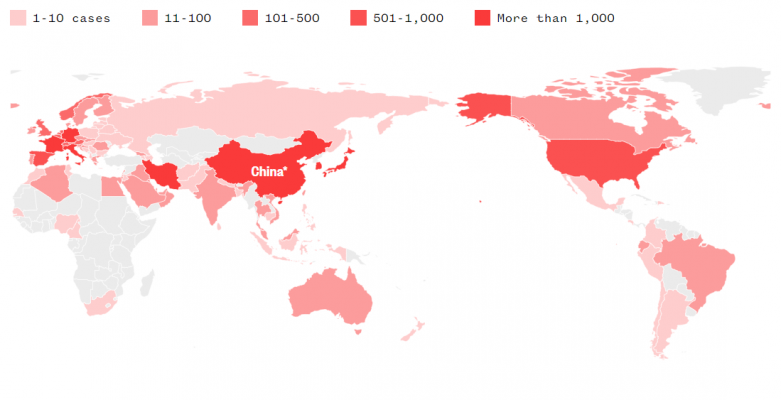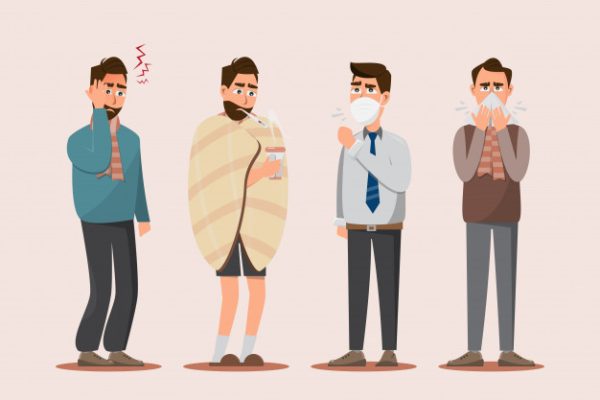A newly identified respiratory virus that causes pneumonia was discovered in December in China.
Cases of the virus, a type of coronavirus that causes a disease called COVID-19, have spread rapidly in China, and have also been reported in at least 100 other countries, including the United States.
Here’s what to know about the coronavirus.
What is a coronavirus?

Coronavirus
Coronaviruses are a group of viruses that can cause a range of symptoms including a runny nose, cough, sore throat and fever. Some are mild, such as the common cold, while others are more likely to lead to pneumonia. They’re usually spread through direct contact with an infected person.
The coronavirus gets its name from the crown-like spikes on its surface, according to the CDC. (Corona is Latin for crown.) Including the newly identified form of the virus, there are a total of seven coronaviruses that can infect humans, the CDC says. Other well-known coronaviruses include SARS and MERS.
More than 90 countries have confirmed coronavirus cases
Hover over a country to see how many confirmed cases and deaths.

Data as of March 9, 5:30 p.m. EDT.
* China includes mainland China, Hong Kong and Macao.Sources: NBC News reports, World Health Organization, state government leaders and health officials.
Graphic: Jiachuan Wu / NBC News
The new virus causes a disease called COVID-19, which stands for coronavirus disease 2019, the year it was discovered.
Key symptoms to watch for include fever, cough and shortness of breath, though the illness can also cause body aches, sore throat, vomiting and diarrhea.
How does the coronavirus spread?
The coronavirus is spread through respiratory droplets when a sick person coughs or sneezes. People within 6 feet of an infected individual are most at risk for inhaling these droplets.
A person could also become infected through contact with the virus particles on a surface, though it’s unknown how long the new coronavirus can survive on surfaces outside of the body. Research has shown that other coronaviruses can survive on hard surfaces for hours to days. If an infected person sneezes or coughs onto a surface, such as a countertop or doorknob, and another person touches that surface and then rubs his or her eyes or nose, for example, the latter may get sick.
The SARS virus was also spread through feces. Denison suggested the same spreading mechanism may be found in the new virus, but it’s too early to know for sure.
How long does it take for someone to get sick?

The new coronavirus’s incubation period — meaning the time it takes from a person being infected with the virus to when they start showing symptoms — appears to be about 14 days, though the average amount of time it takes a person to get sick is about five days, according to the World Health Organization. It’s unclear whether a person is contagious during the incubation period.
How can I prevent coronavirus?

One of the simplest prevention measures a person can take is proper hand-washing.
The CDC recommends washing hands with soap and water before eating, after using the bathroom, and after blowing your nose, coughing or sneezing, and before and after caring for a sick friend or a family member.
The most effective way to clean hands is to wet them with clean water, then apply soap and scrub for at least 20 seconds, before rinsing and drying with a clean towel.
Does a face mask protect you from coronavirus?
The CDC does not recommend that healthy people wear a face mask.
Rather, the CDC recommends that patients with the coronavirus wear a face mask to protect others around them, or, if the patient cannot wear a face mask, others should if they are in the same room together.
Caregivers or people living in the same house as someone who is sick should also wear disposable face masks, along with gloves and disposable gowns, when coming into contact with the patient’s bodily fluids.
For health care workers in contact with coronavirus patients, the CDC recommends a more specialized type of mask — one that is individually fitted to a person’s face to create a seal and that filters out 95 percent of particles that at least 0.3 microns in diameters. (A micron is 1/1,000th of a millimeter.) This type of mask is called N95.
Is it SARS?
No. SARS, or severe acute respiratory syndrome, is a type of coronavirus that was first reported in Asia in February, 2003.
Over the following months, the illness spread to more than two dozen countries, sickening 8,098 people worldwide, killing 774.
However, the new coronavirus is a different strain. It’s unknown at this point if the new virus is as severe or as contagious as SARS. While some patients in China have had serious illness, other patients have had milder illness and been discharged.
Is there a coronavirus vaccine?

There is currently no vaccine to prevent the coronavirus.
The National Institute of Allergy and Infectious Diseases may begin clinical trials on a vaccine within weeks, though the vaccine would not be available for at least another year.
Is there a coronavirus treatment?
There is currently no treatment for the coronavirus. Patients are helped by what’s called supportive care, for example, to help them breathe.
A group of coronavirus patients in Nebraska are taking part in a clinical trial for a possible treatment with an antiviral drug called remdesivir. Originally developed for possible treatment for Ebola, the drug has previously shown promise in treating other coronaviruses, such as SARS.
Other clinical trials of remdesivir are ongoing in China to test its effects on both severe and mild cases of the disease, according to Dr. Anthony Fauci, director of the National Institute of Allergy and Infectious Disease.
Do disinfectants kill the coronavirus?
Yes, they can. The CDC suggests that anyone exposed to an infected patient clean all “high-touch” surfaces, such as counters, tabletops, doorknobs, bathroom fixtures, toilets, phones, keyboards, tablets and bedside tables.
Cleaning agents can include a household disinfectant with a label that says “EPA-approved,” according to the CDC. A homemade version can be made, using one tablespoon of bleach to one quart of water.
Can coronavirus be spread through the mail or through goods imported from China?
It’s extremely unlikely. While more needs to be learned about how this particular virus works, coronaviruses typically don’t live very long on surfaces, and are very unlikely to survive over a period of days or weeks when an item is being shipped.
“There is no evidence to support transmission of [COVID-19] associated with imported goods and there have not been any cases of [COVID-19] in the United States associated with imported goods,” said Dr. Nancy Messonnier, director of the CDC’s National Center for Immunization and Respiratory Diseases, during a call with journalists.
Source : nbcnews.com
Images Source : Internet
